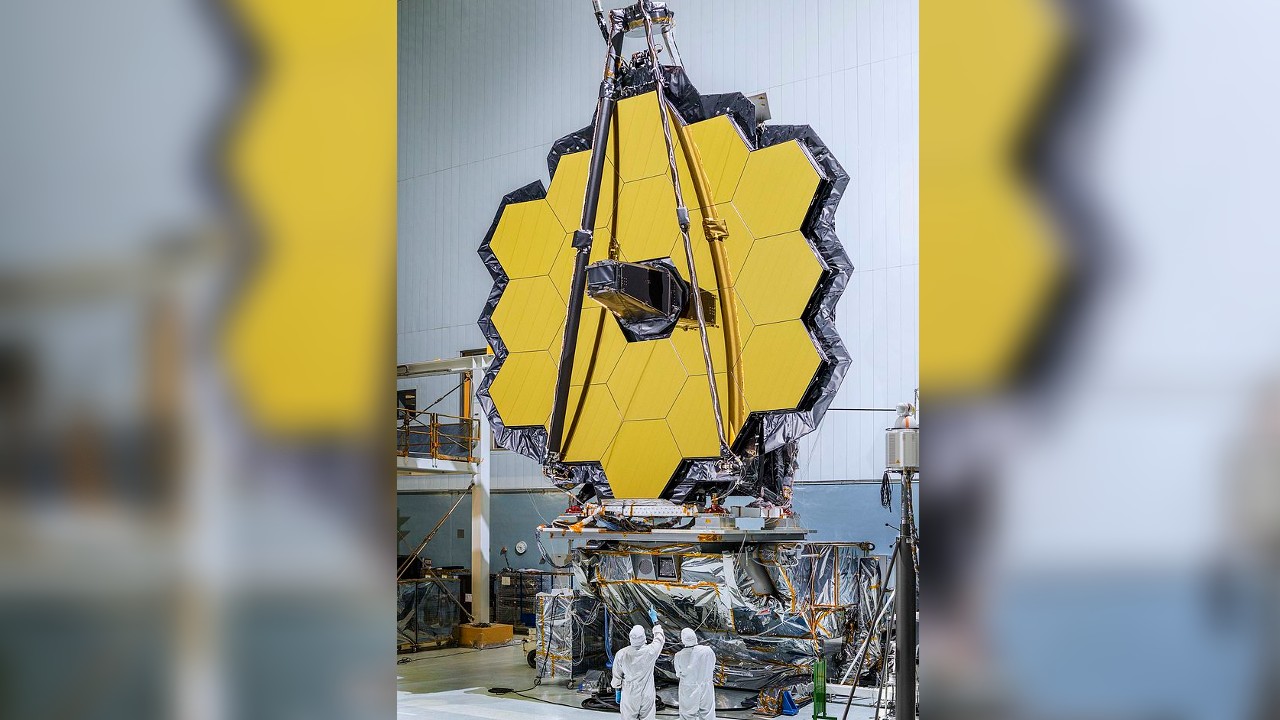See the deepest image ever taken of our universe, captured by James Webb Telescope
This is the most detailed image of the universe ever captured.

The first full-color image from the James Webb Space Telescope has been unveiled by NASA and President Joe Biden, and it's the deepest and and most detailed image of the universe to ever be captured.
Named "Webb's First Deep Field," the spectacular and mind-bending photo shows our universe only a few hundred million years after the Big Bang, just as galaxies began to form and light started flickering from the very first stars. This starlight took roughly 13.5 billion years — or most of the age of the universe — to travel to us, arriving at the James Webb Space Telescope (JWST) after the space-time warping gravitational pull of the galaxy cluster SMACS 0723 steered even the fainter and more distant light into focus.
"We're going back 13.5 billion years," NASA administrator Bill Nelson said at the press conference. "And since we know the universe is 13.8 billion years old, we're going back almost to the beginning." Nelson added that the telescope "is going to be so precise you are going to see whether or not planets are habitable," and that its unprecedented views of the universe would enable scientists to find answers to questions that haven't even been asked yet.
Related: James Webb telescope reaches 'perfect' alignment ahead of debut science images
Remarkably, despite the overwhelming density and the quickly exponential number of galaxies, stars, and planets contained within the image, Nelson explained it was just the tiniest slice of the night sky.
"Mr President, if you held a grain of sand on the tip of your finger at arm's length that is the part of the universe that you're seeing [in the image], just one little speck of the universe." Nelson said. "100 years ago, we thought there was only one galaxy. Now the number is unlimited. And in our galaxy, we have billions of stars or suns. And there are billions of galaxies with billions of stars and suns."
The previous record-holder for capturing the deepest and oldest glimpse into space is the Hubble Space Telescope. Its series of deep image fields showed how, several hundred million years after the Big Bang, galaxies of glistening stars had already coalesced in our young universe. But to peer even further back in time, scientists needed to design a telescope both large enough to capture light from the faintest objects and capable of detecting the mid-infrared frequencies the most distant light had been shifted to by the universe's expansion.
Get the world’s most fascinating discoveries delivered straight to your inbox.

Enter the James Webb Space Telescope. Its primary mirror diameter measures 21.6 feet (6.6 m) wide, compared with Hubble's mirror, which is just 7.9 feet (2.4 m) wide in diameter. This means the JWST is capable of detecting objects 100 times fainter than Hubble could see. The telescope can also scan the universe in infrared, enabling it to glimpse galaxies that were born a mere 200 million years after the Big Bang.
The JWST's extreme sensitivity to infrared frequencies meant that it needed to be isolated from disruptive heat signals on Earth, and it now rests at a gravitationally stable location beyond the moon's orbit — known as a Lagrange point — after being launched there from French Guiana atop an Ariane 5 rocket on Christmas Day 2021. Across the six months following its launch, NASA engineers calibrated the telescope's instruments and mirror segments in preparation for snapping the first images. Their progress was briefly interrupted after the telescope was unexpectedly struck by a micrometeoroid sometime between May 23 and May 25; but, the impact did not damage the spacecraft, Live Science previously reported.
The image is the first of many to be collected by the JWST. On Tuesday (July 12) at 10:30 a.m. EDT (1430 GMT), NASA is releasing four more images, offering views of a stellar nursery; the atmosphere of a distant exoplanet; a figure-eight-shaped gas explosion from a dying star; and a "quintet of galaxies locked in a cosmic dance of endless near-collisions" according to a NASA statement. You can follow tomorrow's release here at Live Science or on NASA's website.
"It shows what we can achieve, what more we can discover — not just about distant places but [about] our very own planet," Biden said at the press conference.
Originally published on Live Science.

Ben Turner is a U.K. based writer and editor at Live Science. He covers physics and astronomy, tech and climate change. He graduated from University College London with a degree in particle physics before training as a journalist. When he's not writing, Ben enjoys reading literature, playing the guitar and embarrassing himself with chess.


